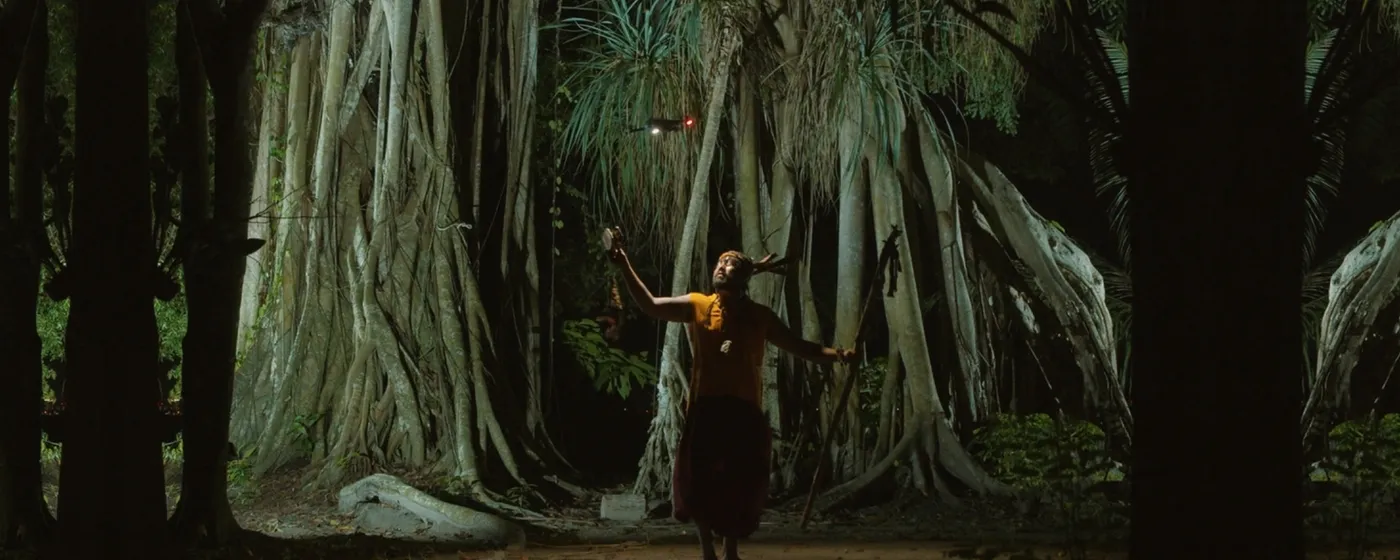
Deconstruction of Myths #2. New Worlds’ Inhabitants
From CIFRA: In Olga Shishko's playlist, artists show that myth isn't just made up; it's a reflection of reality. Familiar places take on new shapes and sounds. The ocean floor becomes a spot that you can actually sweep clean, while an ancient cave feels like a home you never want to leave. From Olga Shishko: In “The New Dark Ages,” James Bridle argues that today’s crisis is not one of knowledge or social organization, but a crisis of vision, particularly in relation to the environment. He describes our time as an era of “blindness,” where perception shifts from analytical to sensory, and artists become “new mediums” toward the world. Over the past 60 years, technological advancements and ecological challenges have pushed us to reconsider our bodies, capabilities, and the ethical horizon of “humanity.” In the coming decades, human beings may experience an ongoing ontological identity crisis. However, this isn’t as frightening as Michel Foucault suggests in The Order of Things...: “It is comforting, however, and a source of profound relief to think that man is only a recent invention, a figure not yet two centuries old, a new wrinkle in our knowledge, and that he will disappear again as soon as that knowledge has discovered a new form.” Myth is also a form of knowledge, a way of understanding that is not a historically underdeveloped form of cognition. Science and blind faith in progress have led us to misunderstand our place in the world. By tapping into mythological consciousness and practices, the artists presented in this selection create narratives that direct attention to the future of humanity, humankind, and other possible forms of life. What are we? The playlist begins with Mariano Sardón’s “The Wall of Gazes,” which directly questions what we, as people, truly know about each other. During an experiment in Buenos Aires, Sardón tracked the eye movements of people looking at images of other individuals using an eye tracker. The experiment highlights not what we see, but what remains in our blind spot—those parts of a person’s face often overlooked, revealing how a mere glance is insufficient and how other senses are needed to understand others. Sergey Kishchenko’s performance film “The Duck Test” unfolds amid the ruins of a factory. The earth, soaked in sweat, blood, and oil, becomes an archetypal space of myth, embodying the cyclical nature of creation and destruction. Within this space, the Duck Man cannot fully comprehend who they are until the end. Where do we come from? Angelika Markul’s “Deadly Charm of Snakes” blends mythology, politics, beauty, and violence, examining the symbol of the snake in relation to human behavior. The film explores the violence of the Trump era, the mistreatment of snakes, and nature’s enduring power through ancient femininity, referencing the Minoan snake goddess. Almagul Menlibaeva’s “Steppen Barocco” explores female identity in Central Asia, where seven women connect with the spirits of nature, establishing continuity with the land and ancestors. Giuliana Cunéaz’s “Quantum Vacuum” merges religious and ritual references in a virtual environment, performed by an actor. Bjørn Melhus’ “Auto Center Drive” reconfigures pop culture, using the voices of dead celebrities (James Dean, Janis Joplin, Marilyn Monroe, Elvis Presley, Jim Morrison), creating a new contextualization of familiar roles. Where are we going? In “The Story of Nanka Gulu and Iron Hawk” by Chen Zhou, one protagonist is a drone that escapes from a factory in search of ancient wisdom. The other, Nanka Gulu, adopts the drone, naming it Diemo (“initial awareness”), and it connects with nature. This narrative reflects on loss and the need to return to nature in a digitally-driven, information-dominated world. In another film by Bjørn Melhus, “Sugar,” a post-apocalyptic humanoid robot named SUGAR is on a mission to restore human touch. The robot encounters a man living in an underground techno-chamber, attempting to lead him out, but their failure raises questions about contemporary self-awareness in a capitalist world. Alexandra Dementyeva’s “Alien Space” explores the evolution of myths in a technologically advancing society. The installation blends video clips of aliens, robots, and television dynamics, inviting contemplation on modern myth. “Space” becomes a symbolic pantheon where new gods and mythical creatures reside, challenging our perceptions and the boundaries of imagination.
Countries
IT
Tags
Pieces in playlist








